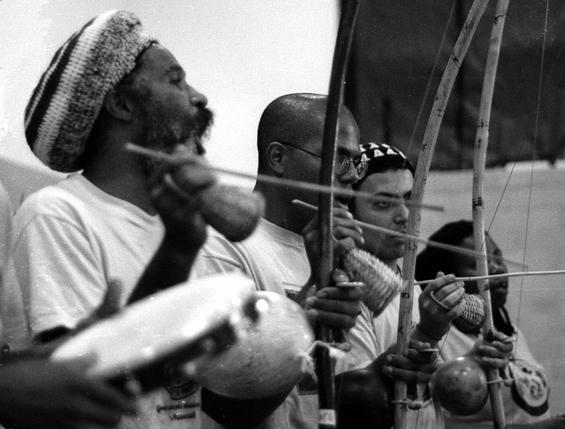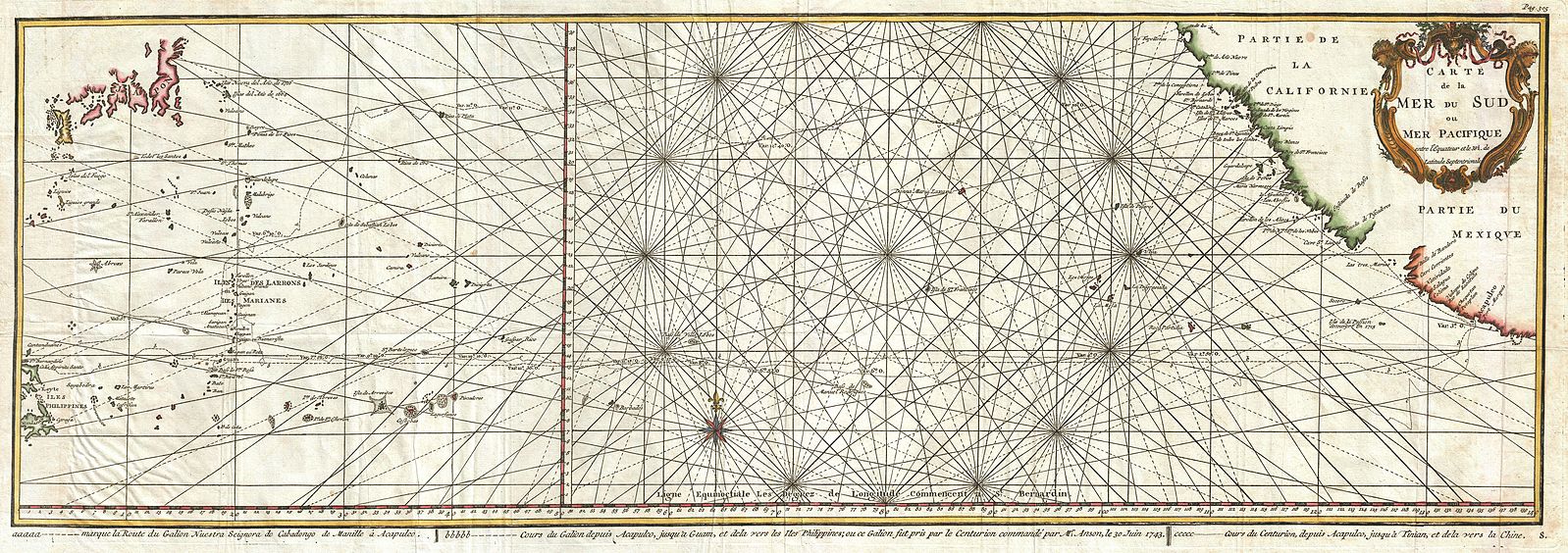"Berimbaus" across the Pacific? On the Origins and Trajectories of the "Belembaotuyan" and the "Berimbau"
The berimbau (short for berimbau de barriga [“belly bow”]) is an Afro-Brazilian single-string bow attached to a dried-out gourd that is placed against the musician’s stomach and moved back and forth to produce vibrato when played. The belembaotuyan (from belembao [“swaying of trees”] and tuyan [“stomach”]) is a musical bow from Guam that uses a desiccated gourd as resonator, which is also placed by the musician’s stomach when played. The nearly identical introductory descriptions of these instruments point to the possibility of a common origin in Africa. Their comparable trajectories hint at the emerging concept of the Black Pacific.
Crafting and playing the instruments
There are, of course, differences between the two instruments based on where they are made and how they have evolved over time. The bow of the berimbau is made of scraped and sanded wild sweetsop tree wood, which can be naturally rounded to form a slight arc. After this preparation, the bow is typically varnished. The backbone of the belembaotuyan (pronounced belem’bao’TOO’dzan and sometimes spelled bilembaotuyan) is traditionally made of wood from Pacific rosewood or wild hibiscus tree. It is skinned, dried over a several days, and then flattened on four sides with a machete or a planer. Thereafter, the steps for each instrument’s completion are quite similar: a metal string (corda for the berimbau and alåmle, from the Spanish “alambre” [wire], for the belembaotuyan) is tightly secured between the two ends of the bow, and the resonator is attached. A shell is placed at the top and bottom of the bow of the bilembaotuyan to prevent the string from touching it. The alåmle is oftentimes extracted from vehicle tires, and it is believed that before the arrival of automobiles, the string may have been made from wild hibiscus or pineapple tree fiber.
The wire in both the belembaotuyan and the berimbau produce twangy tones upon contact with a light stick. The tones and timbre in the berimbau are modulated with a small stone or a coin that is held in the musician’s left hand. In the belembaotuyan, there are two primary tones as a result of a soft wire or string that attaches the gourd to the middle of the bow and goes over the larger wire string across the two ends of the bow. Belembaotuyan tonal variation is further achieved by positioning the fingers of the left hand at the upper half of the bow beneath the wire and touching it to change the pitch. The belembaotuyan can be played solo or alongside singing or other instruments like a guitar. In capoeira, the Afro-Brazilian martial arts or dance form, the berimbau is accompanied by other percussion instruments as well as singing and clapping.
The placement of the resonator in the berimbau and the belembaotuyan, as well as the modes of holding each instrument when played, vary significantly. The gourd or cabaça in the berimbau, which is normally four- to five feet long, is attached to the lower end of the bow with a string. The resonator, the stone or coin, and the bow, which is placed vertically, are all held in the performer’s left hand, while the right hand holds the wooden stick, together with a small basket rattle. The berimbau can be played standing or sitting [Fig. 1].
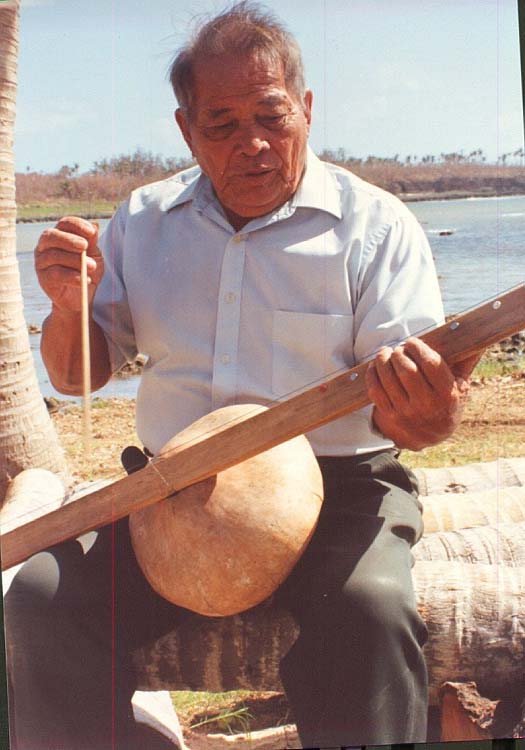
Fig. 2: Closeup of Master Jesus M. Crisostomo playing the belembaotuyan circa 1988. (Photo by Judy Flores, retrieved with permission from Guampedia)
As mentioned earlier, in the belembaotuyan, the resonator (called calabasa, from Spanish “calabaza” [gourd]) is attached to the middle of the bow. The belembaotuyan can measure anywhere between four to nine feet – that is, almost double the size of a berimbau – and it is usually played sitting, with the bow held diagonally [Fig. 2]. The traditional posture for playing the belembaotuyan was leaning or lying on one’s back [Fig. 3].
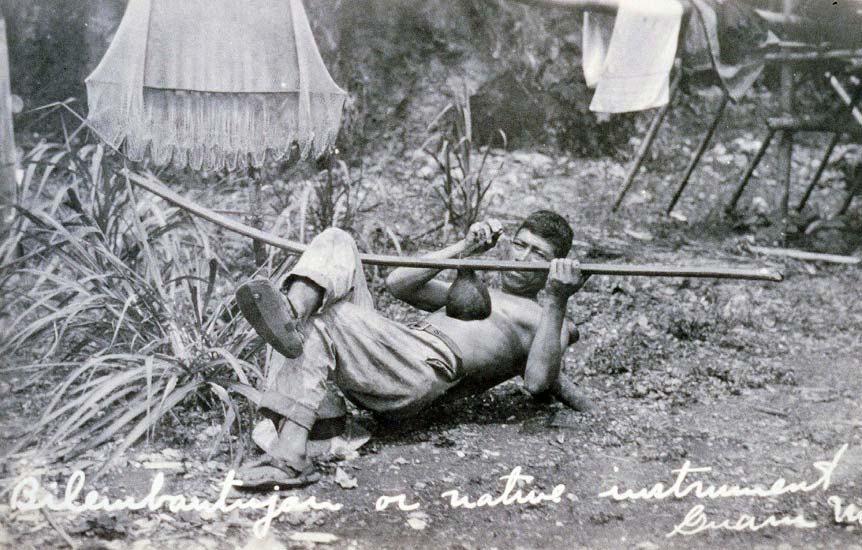
Fig. 3: Man playing the belembaotuyan in a reclined position before World War II. (Archive photo taken by Judy Flores, retrieved with permission from Guampedia)
Possible origins and trajectories
Musical bows are found in various societies across the world, but in the case of the berimbau, there is no question that it is an African-derived instrument (predominantly from West, Central, and South African cultures) brought to Brazil through the transatlantic slave trade. According to ethnomusicologist Eric Galm, “there is no evidence of indigenous musical bows in Brazil. As a result, musical bows in Brazil have become iconic representations of African-descended culture throughout the country.” 1 Galm documents how references to the berimbau and an array of bow instruments played exclusively by Black street vendors and beggars can be found in 19th-century European chronicles about Brazil. After the abolition of slavery in Brazil in 1888, the instrument disappeared from marketplaces, but through capoeira it gradually returned to the public view. 2 At present, the berimbau is one of Brazil’s national icons, yet it is amply heard beyond the South American country as an essential instrument of capoeira, which is now popular worldwide.
As for the origin of the belembaotuyan, many ethnomusicologists contend that it too is an adaptation of African musical bows brought to Guam (a Spanish colony for over two centuries and a US territory since 1898) by way of the maritime transport of slaves and material goods. Guam in the Mariana Islands was an important stop for the so-called Manila galleons, which operated from 1565 to 1815 [Fig. 4]. Porcelain, silk, ivory, spices, and other luxuries were transported from Asia to the Americas in exchange for silver minted in Peru or Mexico. Guam was on the galleon’s westward route. “Because of shipping and constant trade between Asia and South America,” observes Therese Crisostomo Pangelinan, “a belembaotuyan player most likely stopped on Guam and introduced the instrument to the Chamorro people [indigenous peoples of Guam] more than 150 years ago.” 3 And indeed, beyond the luxuries mentioned above, these transpacific galleons carried a number of material objects and cultural practices. Historian Paulina Machuca, for instance, has traced how a coconut wine called tuba arrived in New Spain from the Philippines around the year 1600. In doing so, she importantly mentions that coconut palms arrived in the Americas both from Africa to the Caribbean, Brazil, and Eastern Mexico, and also by way of the Pacific from the Philippines. 4 As such, if we were to accept the hypothesis that the belembaotuyan originated in Africa and arrived to Guam via the Manila galleon trade, it is still not clear whether it travelled first from Africa through Asia or directly across the Atlantic and the Pacific by way of the Americas.
Still others argue that the Chamorro people were playing the belembaotuyan prior to their contact with Europeans. Allan Nazareno affirms that “despite its unclear origins, all bilembaotuyan masters and practitioners believe in its pre-contact existence in Guam.” 5 Delores Taitano Quinata, one of the most distinguished Chamorro makers, players, and teachers of the belembaotuyan at present, summarizes the disparate origin versions of the instrument as follows: “There are theories that suggest that the instrument has been introduced to Guam during the Spanish time through the galleon trade or through the seafarers, so even before then.” 6 Elsewhere, Delores Taitano Quinata and her husband Joseph Quinata propose that the belembaotuyan is of African origin and was introduced in Guam by way of Indonesia through the Arab slave trade. 7
Detours into the Filipino barimbaw and the Mapuche birimbao
It is worth noting the characteristics of a Filipino instrument called the barimbaw, whose name undoubtedly appears to be a slight variation of “berimbau.” Filipino ethnomusicologist Raymundo Bañas proposes that the instrument “was probably introduced in the Philippines by the Chinese” and he goes on to compare it to “the birimbaw of Argentina,” which he describes as a metal jaw harp, whereas the Filipino version is made of bamboo. 8 Both, he points out, require the player’s mouth as resonator. Having said this, Bañas’ illustration of the barimbaw [Fig. 5] is strikingly similar to the Chamorro belembaotuyan, clashing with his description of the Filipino instrument as a jaw harp. Bañas’ mention of “the birimbaw of Argentina” may seem erroneous, but the Mapuche people, whose ancestral land, the Wallmapu, spanned present-day Argentina and Chile, play a metal jaw harp that they call, in effect, birimbao or trompe. 9 Bañas was most likely fusing the characteristics of berimbaus de barriga (belly bows) and berimbaus de boca (mouth harps).
While there are hunting bows in the Philippines that have been used as musical instruments, Filipino ethnomusicologist José Maceda clarifies that the barimbaw (also spelled barimbao) in the Philippines refers to a jaw harp. 10 Musicians play this small hand-carved bamboo instrument by placing it across the mouth; they hold one end with one hand and make repeated finger strikes on the other end with the other hand. As such, it is similar to the Mapuche birimbao. After all, the spelling variations of “berimbau” confirm that it is an onomatopoeia of the twangy resonations produced by the diverse instruments it encompasses.
The broadening reaches of the berimbau and the belembaotuyan
In addition to being central to capoeira, the berimbau in Brazil remains a symbol of Blackness and resistance. The instrument’s traditional sounds are being constantly updated and fused with other musical styles. Indicative of this exciting evolution is the emergence of musical groups like Berimbrown, which was founded in 1991 in Belo Horizonte, Minas Gerais, Brazil. Berimbrown (from berimbau and James Brown) fuses funk, reggae, and rap with the rhythms of capoeira music. Its cofounder, Mestre Negoativo, remembers designing his first musical instrument as a child following an introductory capoeira book, but by using things around him: a stick for the bow, clothesline for the string, and a margarine tub for the resonator. “This gave a sound. Really bad, but it gave a sound,” Mestre Negoativo recalls. 11 He eventually got a hold of a real berimbau and went on to become a capoeira mestre (master practitioner). Berimbrown’s mixture of traditional, local, and popular musical styles stays true in a way to how Mestre Negoativo assembled his first berimbau: combining materials within reach. 12
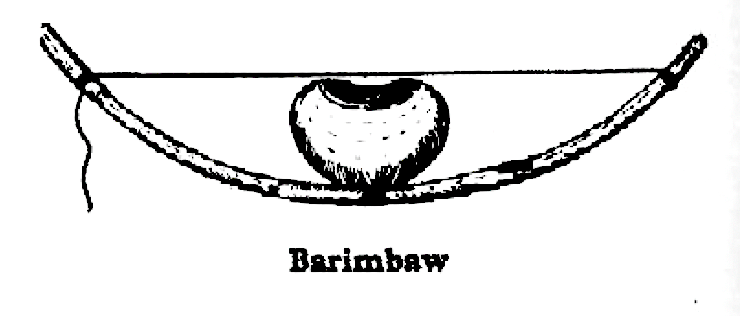
Fig. 5: Illustration of a barimbaw according to R. Bañas. (Image in Bañas, R. Pilipino Music and Theater. Manlapaz, 1975, p. 62)
The belembaotuyan is traditionally played on special occasions, such as weddings and gatherings that the Chamorro call “fiestas.” But as of late, like the berimbau, it is being performed for wider audiences in Guam. Whereas today the berimbau is a symbol of Afro-Brazilian identity, Chamorro ethnomusicologist Andrew Paul Mantanona Gumataotao affirms that the belembaotuyan is being revitalized in Guam as a symbol of Indigenous resilience. 13 It is increasingly more present in public venues, such as cultural festivals, and is becoming part of the musical culture of younger generations. An evident example of the latter is the recent publication of a children’s book titled I Lalai i Bilembaotuyan, which centers on a girl named Lalai who learns how to play the belembaotuyan with her grandfather, Tåtan Bihu. Through the instrument, Lalai feels connected to him even after he passes away, and as she grows older, she is committed to teaching it to younger members of her family. 14
Concluding thoughts
By comparing an iconic Afro-Brazilian instrument to an increasingly recognizable Chamorro instrument, this article gestures toward the field of Black Pacific Studies, which relates the experiences, resilience, and cultural practices of Africans, Afro-descendants, and peoples from across the Pacific. Moreover, it highlights the decolonial potential of two fascinating instruments, crafted with natural and recycled materials endemic to Guam and Brazil, that continue to adapt to or contest the pressures of dominant cultural influences. They place both the Atlantic and the Pacific at the center of intercultural studies of global transmission.
Paula Park is an associate professor of Latin American studies and Spanish at Wesleyan University (US). She is the author of Intercolonial Intimacies: Relinking Latin/o America to the Philippines, 1898-1964 (University of Pittsburgh Press, 2022). Email: pcpark@wesleyan.edu
